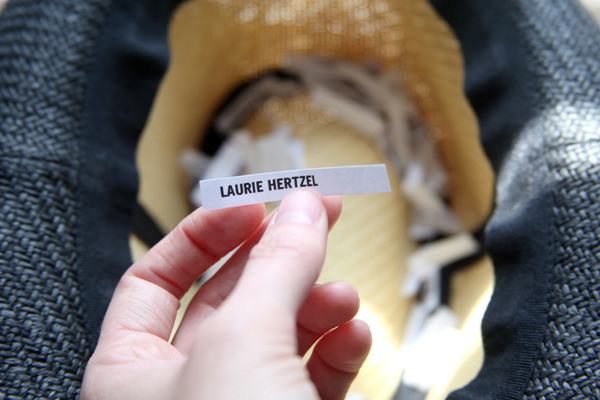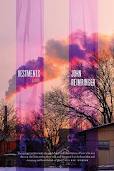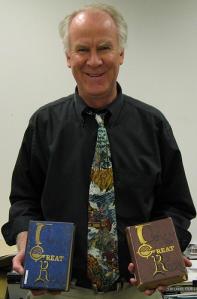First of all, for anyone who tried to reach our site over the last 8 hours and couldn’t, we apologize. Our webhost decided to update our servers early this morning, and instead of the advertised “five minute” downtime, we suffered through 6 hours of no Hazel & Wren. Needless to say, we are not pleased.

We continued the contest over at the Hazel & Wren Facebook page, however, and at noon, put all of the names in a hat, and drew out our winner. We hope that everyone who wanted to participate was able to navigate their way to the Facebook page and do so, but if anyone missed their chance thanks to the site being down, we are very sorry. Please still feel free to suggest MN books (we’ll make sure Patrick sees them), and fear not, this won’t be the last contest we’ll do.
Our sincere thanks to everyone who suggested their favorite Minnesota books! We have a fairly splendid list to send to Patrick, for consideration in his “150 Best Minnesota Books” list. We’re over the moon.
Now on to the good stuff! Ladies & Gents: The List
(If the title was suggested by more than one person, we’ve indicated that. Also, if the suggester included their two cents on a book, we included those comments as well.)
Peter Bognanni, The House of Tomorrow.
Louis Erdrich, The Plague of Doves and The Master Butchers Singing Club.
F. Scott Fitzgerald, The Great Gatsby. “The Great Gatsby is one of those books that I think people can’t help but continue to be fascinated and haunted by, even so many years after it was published. Also it has one of the best last lines of a book ever.”
Frances Cranmer Greenman, Higher Than the Sky, (1954). “Portraitist and columnist Frances Cranmer Greenman’s autobiography is a witty look at both high and low society in Minneapolis in the middle of the 20th century.”
Jon Hassler, Staggerford.
Scott Helmes, Poems 1972-1997.
Dylan Hicks, Boarded Windows (2 votes). “[It’s] a future classic.”
Bill Holm, The Dead Get By With Everything, Coming Home Crazy, The Music of Failure (two votes), Boxelder Bug Variations. “[The Music of Failure] is my most treasured possession, and I visit it often. Bill–Minnesota’s modern Walt Whitman, a treasure, recipient of awards from all kinds of state and local organizations–call him what you will–he is no short of the best. If only we all had the eye to see as he sees.”
Coco Irvine & Peg Meier, Through No Fault of My Own, University of Minnesota Press (two votes). “It’s way charming.” “In her diggings through archives, Peg unearths some of the most wonderful stories, and this is without a doubt one of the best. A great look at the high life on 1920s Summit Ave through the eyes of a 13 yr old girl.”
Robert Kilbride, The Potboiler Quiz: How to Draw Stuff of How I Made $1786.00 in the Fine Arts in Only 16 Years, (1970). “It’s a shame painter, gallerist and columnist [Kilbride] never wrote a full-length book of essays, but his long out-of-print The Potboiler Quiz is a bizarre, hilarious glimpse into the mind of a true Minneapolis original.”
Meridel Le Seueur, North Star Country. “Le Seuer’s mosaic-like, almost dreamlike recounting of the state’s early history through the experiences of its common people is one of the most poetic books about Minnesota ever written.” Also, The Girl.
Brad Liening, Ghosts & Doppelgangers.
Eireann Lorsung, Music for Landing Planes By. “Meaty poetry touching on family, nature, migration, working with hands.”
Mary McCarthy, Memories of a Catholic Girlhood. “[It’s] a wrenching look at an unhappy childhood in the Catholic slums of Whittier before World War I.”
Larry Millet, Once There Were Castles. “This is a fantastic historical look behind the closed doors of some of the Twin Cities’ most prominent families. Closed doors that are no longer there. A really engrossing read, impeccably researched.”
Mike Nelson, Death Rat. “A hilarious novel that spoofs several MN legends like G. Keillor and Prince. (Mike is a MN legend himself.)”
Tim O’Brien, Northern Lights and In the Lake of the Woods. “Not sure how Minnesota-centric the books themselves need to be for the list, but as for a few awesome Minnesota-born writers, […] I think his The Things We Carried definitely deserves a place. It was a pretty life-changing read for my AP English class at the end of senior year.”
David Oppegaard, Suicide Collectors, and Wormwood Nevada. “David is a brilliant writer who graduated from St. Olaf and lives in Minneapolis.”
John Reimringer, Vestments (two votes). “A novel with such a crashing crescendo ending, it will leave you breathless, plus gives a completely true look at the inside family dynamics of old-school St. Paul.”
O.E. Rolvaag, Giants in the Earth. “I consider [it] to be #1. It’s got everything. Meticulous insight into the human condition, history from the viewpoint of the participants, and clear, polished writing.”
Danielle Sosin, The Long Shining Waters.
Alec Soth, From Here to There. “[Photo book:] [It’s] a summation of an incredible body of work.”
Joyce Sutphen, Coming Back to the Body, Naming the Stars, First Words. “Our current poet laureate […] To paraphrase what others have praised: Coming Back to the Body was a finalist for the MN Book Award for poetry, and Naming the Stars won the MN Book Award for poetry. Or there’s her most recent collection, First Words, which Connie Wanek describes so much better than I could: ‘Sutphen’s latest book, First Words (Red Dragonfly Press, 2010) describes her family’s farm and her early years; it reads like a memoir in poems. And like all good memoir, it describes more than personal experience, evoking a more universal experience, too, of rural and small town life in the 1950s. The collection is a warm, generous meditation, perhaps her most intimate book: we see her ‘at the top of the stairs’ waving goodnight in ‘pajamas that had feet.’ We see her hanging wash, and sitting on the top bale ‘bringing in the hay.’ She writes poems praising the harrow and the oat binder and her favorite tractor, the “H.”‘ (from: http://mnartists.org/article.do?rid=296981) The collection is stunning, and fills me with the strongest nostalgia for back home, the place just outside of the Twin Cities, where the city falls away to the woods and to the prairie.”
Barton Sutter, Cold Comfort.
Brenda Ueland, If You Want to Write. “Quoted in the MOST unexpected places. I have re-read this several times. Another classic!”
Charles Rumford Walker, American City. “An excellent account of the 1934 truckers’ strike from only a few years later.”
Laura Ingalls Wilder, The Little House on the Prairie series.
Mary Lethert Wingerd, Claiming the City. “Begins with the [1934] trucker’s strike and explains why nothing of the sort ever happened in St. Paul. It’s the definitive account of that city’s civic character.”
James Wright, Above the River: The Complete Poems and Selected Prose.
Brad Zellar, Suburban World. “[Photo book:] [It’s] an amazing look at the fast-growing suburbs of the south metro in the postwar era, as see through the eyes (and the camera lens) of an amateur photographer in Bloomington in the ’50s and ’60s.”
What do you think?
Also, if you’re in the Twin Cities this weekend, be sure to stop by the Twin Cities Antiquarian & Rare Book Fair! We’ll be there, so come find our table, pick up a free bookmark, and say hello! We’d love to see you.
What We’re Reading: Vestments for 150 Best MN Books

 Vestments by John Reimringer (Milkweed Editions, 2010).
Vestments by John Reimringer (Milkweed Editions, 2010).
If you’ve visited the blog or our social media this week, you’ve probably seen some mutterings about a contest happening for Patrick Coleman’s 150 Best Minnesota Books list. Well, we’re continuing this theme today with a book that I personally think should be on the list. It’s a novel set in Minnesota, written by a Minnesotan writer, and published by a Minnesotan publisher. Slam. Dunk.
Vestments made its first appearance as a short story, which was featured in Milkeed Edition’s anthology, Fiction on a Stick (another great local read, by the way), which I mentioned in an earlier post. Set mostly in St. Paul, Vestments is full of familiar Minnesotan culture, landmarks, and people.
The plot follows a young priest named James Dressler who is on temporary leave, having lost his way after falling into temptations of the flesh (also known as Betty Garcia, his first love). Searching for a way back to his faith, James spends time with his complicated, dysfunctional family in St. Paul, including his explosive, larger-than-life father. Going into this novel, I wasn’t sure how I’d feel about a book so centered around Catholicism. But Reimringer created an utterly relatable and human character in James with his searching self-reflection and self-doubt. James is a character that reflects the everyday reader.
Beautifully and intricately written, this book pulls you into its rough arms and holds on tight. Rich with St. Paul and Catholic history and tradition, this book uses the past as a way for James to discover a new future, a new kind of faith. Don’t get me wrong, it’s not an easy path. There are gritty moments of confrontation, the difficulty of reconciling flesh with faith, and messy relationships that don’t fall in line.
Reimringer’s past life as a journalist comes through in his attention to detail. One example of this, as he says in this MPR interview, is his deep research into the restaurants and other landmarks that were still around in the 1990s, when this book is set. Additionally, many of the book’s characters are based off his own family who had roots in St. Paul. Reimringer talks about his novel as “a love letter to St. Paul,” and I agree.
Minnesotans, what books do you think should be added to this list? If you’re not from Minnesota, tell us what books YOU would want to see on a similar list for your state!

Patrick Coleman has a secret. “Someday, someone will find out that I’m having too much fun,” he whispers hoarsely from behind his hand.
OK, so maybe he actually said that in a normal, good-natured voice with his hands folded comfortably in front of him, but, you know, we like to embellish once in a while. But that fun he’s having too much of? That’s no embellishment. As the Acquisitions Librarian at the Minnesota Historical Society (MNHS), Coleman spends his days finding and acquiring books about Minnesota history and culture. Clearly, it’s a labor of love.

© 150 Best Minnesota Books
His love of books started as a child, thanks to parents who loved to read, and particularly his father, who took a special interest in Minnesota history. He recalls traveling around the state on family vacations, armed with the WPA’s 1938 Minnesota: A State Guide. They would pull into a new town like Anoka, and his dad would pass the book around, instructing Coleman and his siblings to open to the section about Anoka and read aloud.
In his college years, Coleman worked at MINITEX (Minnesota Inter-Library Teletype Exchange), where twice a week, he would take a bus down to the old historical society building (which was then right next to the Capitol). “I would go into the old curator’s office, shut the door, turn on the lights, and look [at all the books].” Someday, he wanted that guy’s job.
In a nutshell: he got it.
Fast forward 30-plus years, and he still lives and breathes Minnesota books. At MNHS, his job is “not only to acquire the material, but also to promote [it].” To that end, Coleman has embraced social media: he’s on Twitter (@PKColeman), for one. He tries to tweet about at least one book that he acquires for MNHS per day. His hope is this: “If anybody followed me, which of course they don’t, they’ll realize what a resource MNHS is.”
He’s also a blogger, curator of the blog, 150 Best Minnesota Books.
It was an idea that began percolating years ago, when he noticed that there wasn’t a “Best of Minnesota” bibliography, or anything of the sort for booksellers. He asked around, and dealers encouraged him to compile one. “I spent a long time thinking about it,” he said. After he felt he had worked at the MNHS long enough, “I took 100 blank notecards home with me, kept them by my bed. Every night, I’d think of 10, 15, 20 books before I went to bed.”
And there the notecards sat, until the Minnesota Sesquicentennial came around in 2008, and everyone and their cousin were pulling together lists of “150 Best” Minnesotan things. So Patrick thought to himself, “Why don’t I use my list of 100 books?” With 150 books, he’d then have “some growing room,” and 150 Best Minnesota Books was born.
What’s on the list so far? “I wanted to have some books that people will know, like The Great Gatsby, but also introduce people to books that have been lost to history, that people don’t know about,” says Coleman. He’s looking to build a list that shows the “depth and breadth of not only Minnesota history, but also its culture.”
Sometimes he wonders at the audacity necessary to compile such a definitive list. “It’s pretty arrogant to say I can just list these things,” but, then again, “there is no other human being around who’s spent more time thinking about Minnesota books.” We’re inclined to agree. But he’s not above asking for help (see below for more details).
His criteria for what constitutes a place on the “Best” list is “a combination of a lot of things. Sometimes it’s the physical quality of a book.” For example, when choosing which Patricia Hampl book to include, he ultimately chose a fine press book published by Milkweed Editions, because the book itself was so gorgeous.
Some other guidelines? “It can be a foundation book, like William Watts Folwell’s A History of Minnesota, […] or a canonical book like Main Street.” Or, it “can also just be an important lost piece of Minnesota.”
Does he have a favorite book? “Every book I’ve listed so far I’ve really liked. Some are more necessary while some are more fun,” including some science fiction and mysteries that aren’t usually seen on more “serious” trade bibliographies. “Frankly, I’m having fun with it. It’s just a gas.”
Want to get in on the fun? Here are two ways:
1) This week, we’re taking suggestions of books for Coleman to include in the “150 Best Minnesota Books” list. More details on how to participate, here.
2) Come to the Twin Cities Antiquarian & Rare Book Fair this Friday and Saturday (June 29–30), at the MN State Fairgrounds. There you can browse over 60 stalls of books, with prices ranging from $35,000 to $2, and start your own book collection. (Even to just to be in the presence of a rare Fitzgerald or Sinclair Lewis edition! Squeals!) Even better, Coleman himself will be there, if you’d like to present a case for your favorite Minnesota book in person. See you there?

Boy oh boy, have we got some major treats for you! This week, we’re teaming up with Patrick Coleman, Acquisitions Librarian at the Minnesota Historical Society, and curator of “The 150 Best Minnesota Books” list. So far, he has over 60 books on the list, and this week, we’re taking suggestions for the remaining spots!
Know a book that abso-positively must be on the list? To start with, head over to The 150 Best Minnesota Books List… So Far to make sure your book isn’t already on the list. Then leave the title, author, and a brief reason why you think it belongs on the list either on the Hazel & Wren Facebook page, or here in the comment section of this blog post.
Everyone who posts a suggestion will be added to the hat, from which we’ll pull the winner on Friday at noon. Have more than one book to suggest? We’ll throw your name in for each “Best Minnesota” book you suggest. That means the more suggestions, the greater your chances to win! The winner will receive a free letterpress print of their choice, plus (for those of you in the Twin Cities area) FREE ADMISSION to the Twin Cities Antiquarian & Rare Book Fair this weekend! Wowee!
We’ll also be compiling all of the suggestions for Patrick to take into consideration for future books. So if you’re persuasive enough, you just might see your book(s) on the list in the near future!
So, bookworms: Ready, set, go!

Winslow Homer, The New Novel, 1877. Watercolor. Museum of Fine Arts, Springfield, MA.

Giuseppe Arcimboldo, The Librarian, c. 1562. Oil on canvas. Skokloster Castle, Sweden

Géza Vörös, Reading Woman, undated (Ecole de Paris movement). Oil on canvas. Private collection.
Psst: Stay tuned this week for more book fun, including an interview with Patrick Coleman, and more information on this weekend’s Book Fair!





